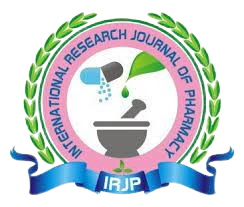ANALYZING THE CLINICAL PROFILE AND SHORT- IMMEDIATE-TERM OUTCOMES OF ACUTE AND INTERMEDIATE- RISK PULMONARY THROMBOEMBOLISM IN PATIENTS ADMITTED TO ICU AND EMERGENCY DEPARTMENT- A CLINICAL STUDY
Keywords:
thrombolysis, pulmonary thromboembolism,, hemodynamics, anticoagulants.Abstract
Background: There is a dearth of information in the literature about the short- and immediate-term effects of pulmonary
thromboembolism. Nonetheless, the literature has provided a thorough description of the long-term results.
Aim: The goal of the current investigation was to evaluate the clinical profile and short- and immediate-term outcomes of
participants suffering from intermediate-risk pulmonary thromboembolism. The benefit of thrombolysis in participants
with normotension who had pulmonary thromboembolism was also assessed in this trial.
Methods: Participants in the trial with acute and moderate pulmonary thromboembolism were evaluated.
Echocardiography and electrocardiography were performed on all participants upon admission, during their stay, upon
discharge, and during follow-up appointments. Anticoagulants or thrombolysis were used to treat the subjects according
to their hemodynamic decompensation. The individuals' right ventricular function and pulmonary arterial hypertension
were evaluated as echo parameters during the follow-up visits.
Results: Of the 110 individuals evaluated, 52 had intermediate low-risk pulmonary thromboembolism (PTE) and 58 had
intermediate high-risk PTE. The study participants were normotensive and had sPESI (simple pulmonary embolism
severity index) scores of,2. The ECG pattern in most of the individuals revealed S1Q3T3 with elevated cardiac troponin
levels. When followed up after three months, patients treated with thrombolytic drugs showed less hemodynamic
decompensation than those treated with anticoagulants, who had clinical signs of right heart failure.
Conclusion: This study contributes to the body of knowledge on the consequences of intermediate-risk pulmonary
thromboembolism and the impact of thrombolysis on individuals who exhibit hemodynamic stability. The study found
that those with hemodynamic instability had a lower incidence and development of right heart failure.








